1. Andringitra Mountains

- Where: Andringitra National Park, Madagascar
- Starting point: Endanikay Trailhead
- End point: Camp Catta or Pic Boby summit
- Time needed: 2-3 days.
- Distance and Type: 18 kilometers circuit
- Difficulty: Difficult
- When to Hike: The best time to hike is from April to November when the weather is dry and clear.
- Where to Stay: There are campsites and huts along the trail, or you can stay in nearby towns like Ambalavao or Fianarantsoa.
The Andringitra Mountains offer some of the most beautiful and challenging hikes in Madagascar. The Endanikay Trailhead is the starting point for the best trail, which takes you through valleys, forests, and grasslands, all the way to Camp Catta or Pic Boby summit. The trail is well-marked but challenging, with steep climbs, narrow ridges, and rocky terrain. Along the way, you’ll see stunning views of the mountains, waterfalls, and wildlife. The best time to hike is from April to November when the weather is dry and clear. Plan for 2-3 days to complete the hike, with overnight stays at campsites or huts along the trail.
2. Amber Mountain National Park (Joffreville Circuit)

- Where: Joffreville, Antsiranana Province, northern Madagascar
- Starting Point: The town of Joffreville.
- End Point: The trail ends back at Joffreville.
- Time Needed: 4-5 hours.
- Distance and Type: 7 kilometers circuit
- Difficulty: Moderate
- When to Hike: The best time to hike in Amber Mountain National Park is during the dry season, which is from April to November.
- Where to Stay: There are several lodges and guesthouses located in Joffreville, as well as camping options in the park.
The Joffreville Circuit Trail takes hikers through the lush rainforest of Amber Mountain National Park, passing by waterfalls, streams, and several viewpoints. The trail starts with a steep uphill climb and then levels off, with some up and down sections. The trail passes by the Sacred Waterfall, which is a popular swimming spot, and then continues through the forest, with opportunities to spot lemurs, chameleons, and other wildlife. The trail then leads to the summit of Montagne des Francais, which offers panoramic views of the park and surrounding areas. Finally, the trail descends back down to Joffreville.
3. Tsingy de Bemaraha National Park
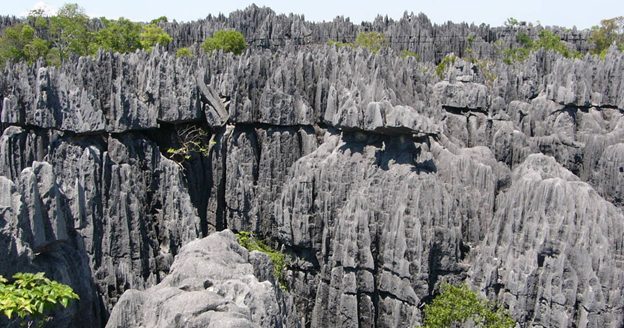
- Where: Western Madagascar
- Starting point: The visitor center at the park entrance.
- End point: The Great Tsingy viewpoint.
- Time needed: 7-8 hours.
- Distance and Type: 7-10 kilometers circuit
- Difficulty: Moderate-Difficult
- When to Hike: Early morning or late afternoon to avoid the heat and crowds. The park is open year-round, but the best time to visit is during the dry season from April to November.
- Where to Stay: The park offers basic lodging and camping facilities, or there are hotels and guesthouses in nearby towns.
Tsingy de Bemaraha National Park is a unique UNESCO World Heritage site, characterized by its jagged limestone formations called tsingy, which have been sculpted by erosion and weathering over millions of years. The park has several trails that lead visitors through dense forests, over suspension bridges, and up steep rock formations to breathtaking viewpoints. One of the most popular and well-known trails is the Great Tsingy Circuit, which takes visitors through the heart of the park’s most dramatic and photogenic landscapes. Along the way, hikers can expect to see a variety of wildlife, including lemurs, reptiles, and birds, as well as a diverse array of plants and fungi adapted to the harsh conditions of the park’s karst terrain. Overall, Tsingy de Bemaraha National Park is a must-visit destination for anyone interested in exploring Madagascar’s unique natural wonders.
4. Isalo National Park
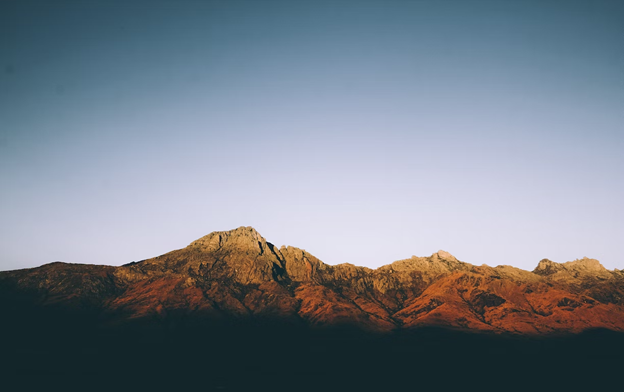
- Where: Isalo National Park is in the Ihorombe region of Madagascar.
- Starting Point: The starting point for the trail is the entrance to the park, where visitors pay the park entrance fee.
- End Point: The end point of the trail depends on which specific trail you choose to take. However, a popular trail in the park is the Canyon des Makis trail, which ends at a beautiful waterfall.
- Time Needed: 6-7 hours.
- Distance and Type: 8-10 kilometers circuit.
- Difficulty: Moderate
- When to Hike: The park is open year-round, but the best time to visit is during the dry season from April to November.
- Where to Stay: There are several lodges and campsites located near the entrance of Isalo National Park, including the Isalo Rock Lodge and Satrana Lodge.
Isalo National Park is known for its stunning sandstone formations, deep canyons, and lush vegetation. It is home to a variety of wildlife, including lemurs, chameleons, and birds. The Canyon des Makis trail is a popular hike in the park, which takes hikers through a beautiful canyon and ends at a picturesque waterfall. The park also has several natural swimming pools, perfect for a refreshing dip after a long hike.
5. Masoala National Park
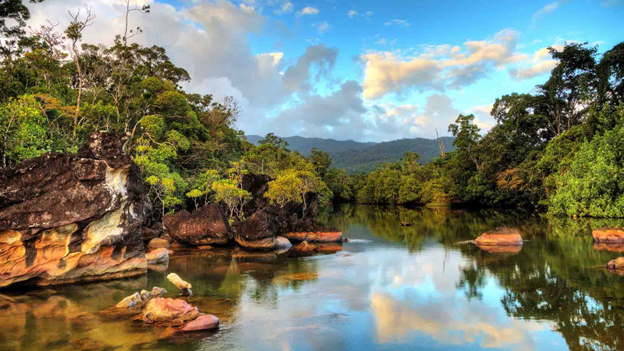
- Where: Northeast coast of Madagascar
- Starting point: The village of Maroantsetra
- End point: Nosy Mangabe island or Antalaha town (depending on the chosen route)
- Time needed: 3-5 days for the full circuit, or 1-2 days for shorter routes.
- Distance and type: 50-60 km for the full circuit or 10-20 km for shorter routes.
- Difficulty: Difficult
- When to Hike: Thebest time is during the dry season from April to November, as the trails can be muddy and slippery during the wet season from December to March.
- Where to Stay: Accommodation options include basic lodges and campsites inside the park, as well as guesthouses and hotels in Maroantsetra
The most popular trail in Masoala National Park is the 50-60 km circuit that starts from the village of Maroantsetra and passes through the dense rainforest, river crossings, and coastal areas of the park. The trail follows a combination of well-marked paths, narrow jungle tracks, and riverbeds, and involves steep ascents and descents through rugged terrain. Along the way, hikers will have the opportunity to spot a wide variety of endemic wildlife, such as lemurs, reptiles, and birds, as well as experience the unique ecosystem of the Masoala peninsula. The circuit can be done in 3-5 days with an experienced guide, who can arrange overnight stays at basic lodges and campsites inside the park. Alternatively, shorter routes are available for those who want to explore the park for a day or two.
6. Ranomafana National Park

- Where: Southeast Madagascar
- Starting point: Sahambavy village
- End point: Varibolo river
- Time needed: 3-4 hours.
- Distance and Type: 7 kilometers circuit
- Difficulty: Moderate
- When to Hike: The best time to visit is during the dry season from June to September, but the park is open year-round.
- Where to Stay: There are several accommodations available in Ranomafana village, including hotels, lodges, and guesthouses.
The well-known trail in Ranomafana National Park is the “Vohiparara Circuit” trail. The trail starts from the village of Sahambavy and follows a dirt road for about 1 km. From there, the trail enters the forest and starts climbing steadily uphill. The trail passes through several types of forest, including bamboo, rainforest, and high-altitude forest. Along the way, hikers can see a variety of wildlife, including lemurs, birds, and reptiles. The trail reaches its highest point at the “Belvedere” viewpoint, which offers panoramic views of the park and surrounding mountains. From the viewpoint, the trail descends to the Varibolo river and follows it back to Sahambavy village, passing through more forest and crossing several small streams.
7. Andasibe-Mantadia National Park
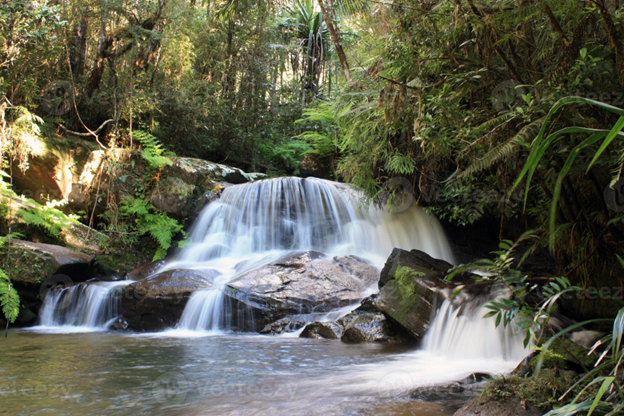
- Where: The park is in eastern Madagascar, about 140 km northeast of Antananarivo, the capital city.
- Starting point: The village of Andasibe.
- End point: The village of Andasibe.
- Time needed: 2-4 hours.
- Distance and type: 7 kilometers circuit
- Difficulty: Moderate-Difficult
- When to Hike: The best time to hike is during the dry season from May to October, as trails can become muddy and difficult to navigate during the rainy season.
- Where to Stay: There are several lodging options in Andasibe, including guesthouses, lodges, and campsites. Some popular options include Hotel Feon’ny Ala, Vakôna Forest Lodge, and Andasibe Hotel.
The Perinet Reserve Circuit is a popular trail in Andasibe-Mantadia National Park that takes visitors through the Perinet Reserve, which is home to several species of lemurs and other wildlife. The trail starts at the park entrance and winds through the forest, passing by several waterfalls and viewpoints along the way. The trail is known for its steep ascents and descents, as well as the diverse flora and fauna found along the way. Visitors are required to have a guide to hike this trail.
8. Montagne d’Ambre

- Where: The park is in eastern Madagascar, about 140 km northeast of Antananarivo, the capital city.
- Starting point: The village of Andasibe.
- End point: The village of Andasibe.
- Time needed: 2-4 hours.
- Distance and type: 7 kilometers circuit
- Difficulty: Moderate-Difficult
- When to Hike: The best time to hike is during the dry season from May to October, as trails can become muddy and difficult to navigate during the rainy season.
- Where to Stay: There are several lodging options in Andasibe, including guesthouses, lodges, and campsites. Some popular options include Hotel Feon’ny Ala, Vakôna Forest Lodge, and Andasibe Hotel.
The Perinet Reserve Circuit is a popular trail in Andasibe-Mantadia National Park that takes visitors through the Perinet Reserve, which is home to several species of lemurs and other wildlife. The trail starts at the park entrance and winds through the forest, passing by several waterfalls and viewpoints along the way. The trail is known for its steep ascents and descents, as well as the diverse flora and fauna found along the way. Visitors are required to have a guide to hike this trail.
9. Montagne d’Ambre

- Where: Southwest Madagascar, approximately 150km from Toliara
- Starting point: Tsimanampetsotsa National Park Visitor Center
- End point: Tsimanampetsotsa National Park Visitor Center
- Time needed: 4-5 hours.
- Distance and Type: 7-8 kilometers circuit
- Difficulty: Easy-Moderate
- When to Hike: The best time to hike is during the dry season from May to November.
- Where to Stay: Camping is allowed in designated areas within the park, or you can stay in the nearby town of Toliara
The Tsimanampetsotsa National Park – Lake Circuit takes you on a beautiful walk around the park’s main attraction, Lake Tsimanampetsotsa. The lake is known for its unique pink color and is an important breeding ground for flamingos and other water birds. During the hike, you will encounter a variety of landscapes, including sand dunes, spiny forests, and the tranquil lake. The trail is well-marked and relatively easy to follow, with a few uphill sections and some sandy stretches. Along the way, you can spot wildlife such as lemurs, chameleons, and a variety of bird species. This hike is a great introduction to the unique flora and fauna of Madagascar and offers stunning views of the surrounding landscape.
10. Ankarana National Park
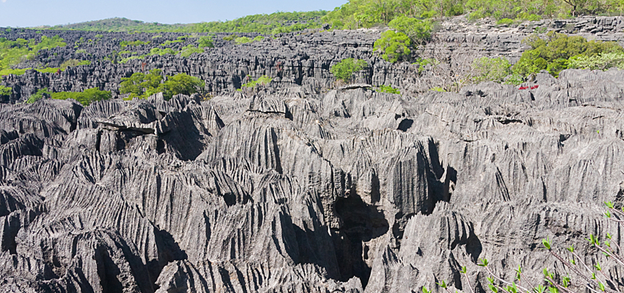
- Where: Ankarana National Park is in northern Madagascar.
- Starting Point: Entrance to the national park.
- End Point: Loop trail that takes hikers through the park.
- Time Needed: 4-5 hours.
- Distance and Type: 5 kilometers circuit
- Difficulty: Moderate-Difficult
- When to Hike: The park is open year-round, but the best time to visit is during the dry season from April to November.
- Where to Stay: There are a few accommodations available near the park entrance, including basic guesthouses and campsites.
Ankarana National Park is known for its unique limestone formations, underground rivers, and the presence of several lemur species. The most popular trail is the loop trail that takes hikers through the Tsingy Rary, a section of the park with sharp limestone pinnacles. Along the trail, hikers may also encounter caves and a variety of plant and animal species, including the crowned lemur and the fossa. Hiking in the park requires a guide, and it is recommended to arrange for one ahead of time through a tour company or the park’s visitor center.

